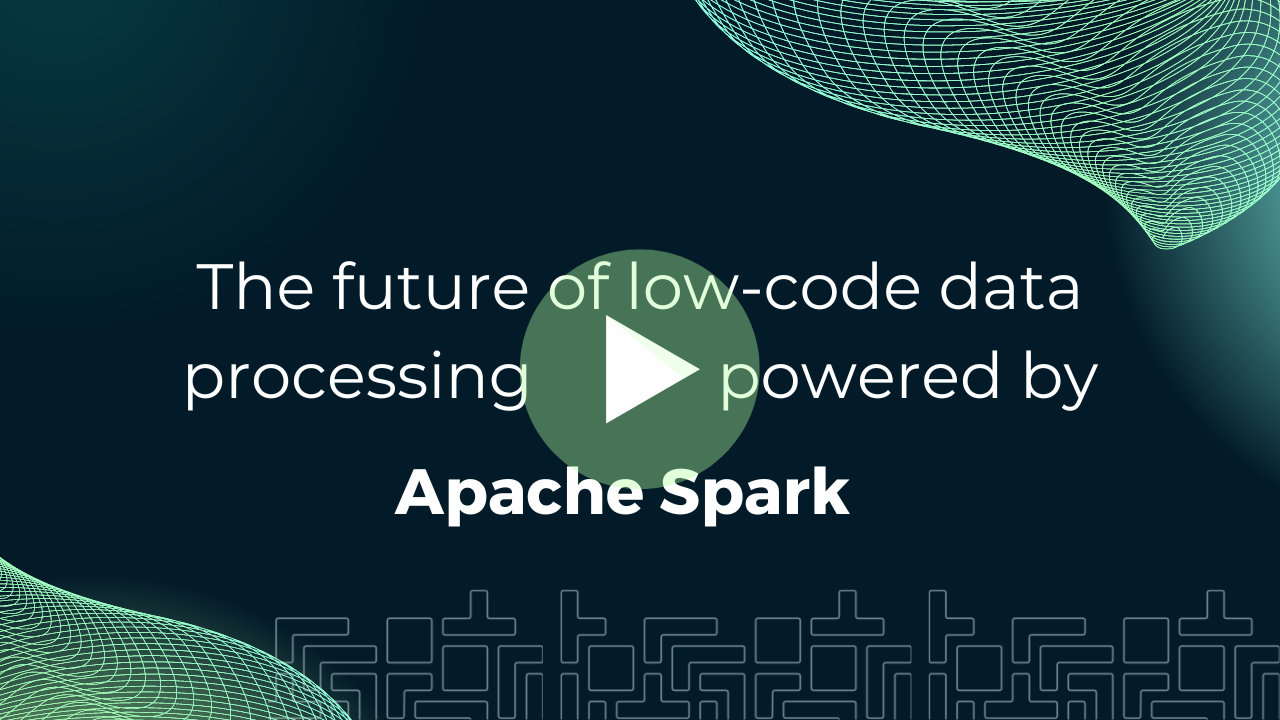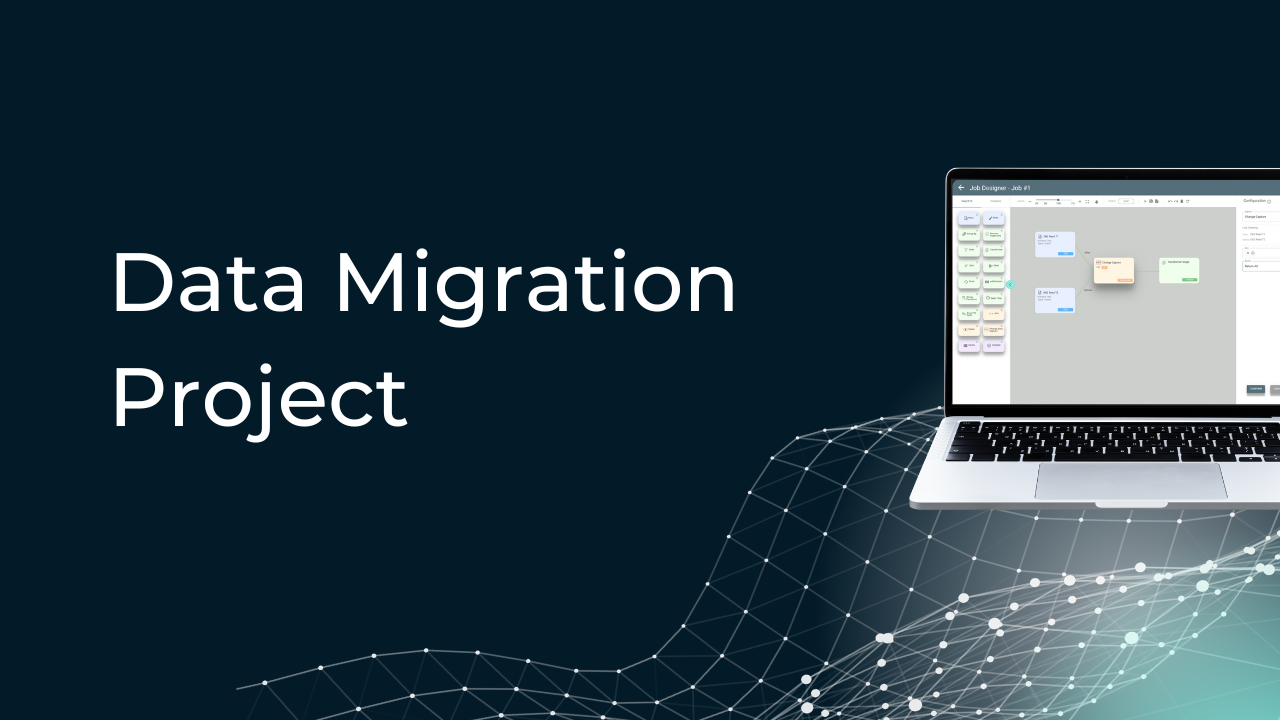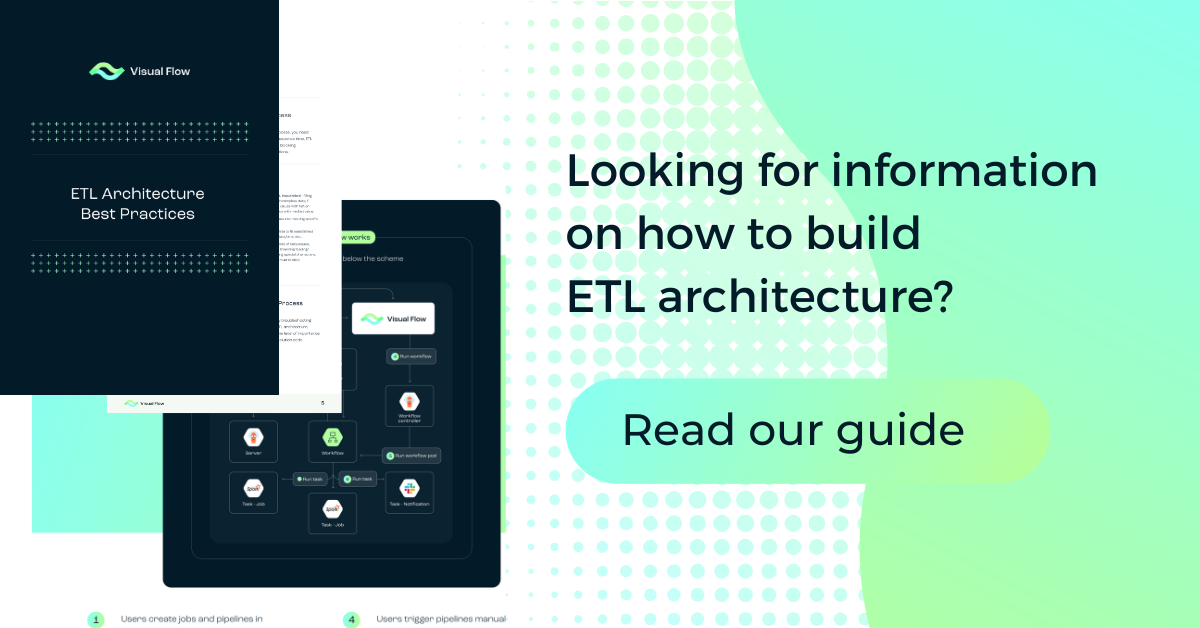Table of Content:
Table of Content:


Data today is a huge asset that makes up the foundation of most processes underlying digital transformation, streamlined management, and growing sales. For business owners and managers, high-quality and complete data is the main decision-making driver. That’s why the so-called data-driven approach has become so relevant across industries and niches. According to Gartner, over a third of large organizations will have had analysts practicing decision intelligence by 2023.
However, simply collecting data isn’t enough. In order to draw conclusions and make decisions, the gathered data must be aggregated from different sources, analyzed, and visualized in the form of a comprehensive analytical report.
This is where Business Intelligence (BI) comes in. The goal of BI is to interpret large volumes of data based on key performance factors. However, no BI process is possible without preliminary extraction, transformation, and loading (ETL) of input information. In this article, we define ETL in business intelligence as well as explain ETL in the business intelligence process and assess what benefits it can bring to your business.
ETL (Extract, Transform, Load) Explanation
ETL (Extract, Transform, Load) is an acronym for an automated data pipeline development methodology by which data is collected and prepared for later use in an analytical environment, such as a data warehouse.
As the name implies, there are three main steps in BI ETL operations:
Extraction
At this stage, data is extracted from the source and fed into the pipeline. The extraction is not limited to a single data source, and data extraction operations commonly rely on multiple sources.
Transformation
During the data transformation phase, certain data manipulations can be performed to structure it by a common order and format.
Load
The load phase is the last step of the ETL in the business intelligence process. During this phase, data is transferred to specialized data storage/database structures, where it is stored permanently.
Business Intelligence Explanation
Business Intelligence (BI) is a set of activities for collecting, processing, and analyzing data. Their main purpose is to combine information from multiple channels into unified analytics.
Business Intelligence systems are used for more in-depth analytics and the development of effective management decisions. BI solutions transform data across a company’s workflow into comprehensible analytics for departments and individual products.
The following processes usually underlie the performance of a BI solution:
- ETL data implementation and cleansing tools that pull information from external sources to then clean and transform it for placement in the repository. The importance of ETL in business intelligence is difficult to overestimate.
- Analytical data warehouse that helps analyze and structure key metrics.
- Data Mining tools to process and analyze data by different slices and methods.
- Tools for data visualization in the form of analytical reports.
The business intelligence process is most effective when it combines data from the market in which a company operates (external data) with data from sources within the company, such as financial and production (internal data). When combined, external and internal data provide a complete picture of the business performance that cannot be obtained from just one of these sources.
BI solves a number of critical tasks:
- Collecting, structuring, and storing relevant data in a single repository.
- Analyzing large amounts of data to create reports and business solutions with analytics in mind.
- Modeling all kinds of solutions for business and successful development of the company.
- Creating strategic and operational reporting to alert the management about deviations in performance.
The main objective of the BI application is to provide complete analytics on all important business aspects and indicators. Companies who have implemented this mechanism in their work have all chances to get relevant, accurate, and organized data.
What is an ETL Process in Business Intelligence?
Pretty much all companies today work with a lot of data. Accounting for expenses, determining revenue and profit, and analyzing user requests and product traffic—it is all about data. To process various metrics, an analyst needs to consolidate them into one table and compare them with previous reports. Over the course of time-consuming work, metrics can become irrelevant. If the analyst does not have all the data, the final report may be incomplete as well.
In turn, ETL applications help solve a number of critical BI tasks:
Data Extraction
Data extraction is the first step in the ETL BI process where data is extracted from different source systems. The source can be a relational database, a flat file (.csv, .excel, .txt, etc.), an API, an IoT device, a website—you name it. Almost any channel that generates or stores data can be used as a source in the ETL process in business intelligence. It can be streaming data coming from social media networks or near real-time stock market buy/sell transactions, or it can come from existing corporate databases and data warehouses.
Transformation
During the transformation phase, rules and processes are applied to the data to prepare it for uploading to the target system. This is usually done in an auxiliary working environment, called a “staging area”. Here, the data is cleansed to ensure reliability and reconciled to grant compatibility with the target system. Many other transformations may be applied, including:
- Cleanup: correction of any errors or missing values;
- Filtering: selecting only what is needed;
- Merging: merging disparate data sources;
- Normalization: conversion of data into common units;
- Data structuring: conversions from one data format to another, such as JSON, XML, or CSV, in database tables;
- Anonymization and encryption: ensuring data privacy and security;
- Sorting: ordering data to improve search efficiency;
- Aggregation: summarizing detailed data.
Load
During the load phase, the transformed data is uploaded to the target environment. The environment can be as simple as a data table, such as an Excel spreadsheet. It can also be a database, which could be part of a much more complex system, such as a data warehouse, data lake, or some other centralized data repository that forms the basis for data analysis, modeling, and processing.
In short, ETL in business intelligence most often occurs in the following scenarios:
- The extraction process retrieves data from one or more sources.
- The conversion process converts data into a format suitable for its purpose and intended use.
- The final download process takes the transformed data and loads it into a new environment, making it ready for visualization, exploration, further transformation, and modeling.
Importance of ETL in Business Intelligence
Now that we have ETL meaning, ETL functions, and ETL features figured out, let’s take a closer look at what the ETL process is in business intelligence and which benefits it can bring.
The main purpose of the ETL process in BI is to get a consolidated view of data that facilitates better business decisions. In particular, the main benefits of ETL in business intelligence are:
High-level data mapping
With a lot of disparate information in hand, it’s extremely difficult to draw any practical conclusions. Using ETL tools allows you to map data, making it easier to integrate, migrate, store and transform, and set relationships between assets.
Big Data ETL analytics
In order for massive volumes of information to really benefit your business, it needs to be pre-processed. This is exactly what ETL tools are good at. They ensure the quality of the data in the warehouse by standardizing and removing duplicates. With the data integration module, ETL for BI collects information from disparate sources and then applies business rules to them.
Automatic and Fast Batch Processing
Today’s ETL tools are based on scripts, which are much faster than traditional manual programming. They can perform tasks in the background as well as automatically carry out batch data processing. The latter is about moving huge amounts of data between two systems on a set schedule. This facilitates timely business decisions.
Managing master data
ETL and data integration provide a convenient view of data from multiple sources. This is one of the cornerstones of business intelligence.
How Can We Help?
ETL tools are a must-have if you are looking to implement BI in your business. But which tool should you choose and how do you set it up to make it work like a clock? Visual Flow is the answer to both of these questions.
We offer a powerhouse cloud-based business intelligence ETL tool for transferring data and preparing it for analysis. Combining the best features of Kubernetes, Spark, and Argo Workflows, Visual Flow offers rich graphical capabilities, user-friendly UI, and rapid scaling opportunities. And our specialists can customize the tool to fit your individual business needs.
The creators of Visual Flow have years of experience from field performance on behalf of IBA Group, providing unparalleled industry insights and expertise in enterprise technology and data sources. IBA Group has partnered with the creators of many ETL tools to combine best practices in terms of their cloud-based ETL services.
Contact us and our experts will give you a detailed consultation on implementing ETL in BI. We will perform an in-depth analysis of your business scope and provide a solution that is configured to work best for you.
Conclusion
Now you know what ETL stands for in Business Intelligence. Almost 90% of R&D departments consider BI to be crucial for their future endeavors according to Dresner. With constant monitoring, managers can make better decisions to gain a competitive edge. The very availability of up-to-date data helps them make the right predictions for their business.
If you haven’t already incorporated the ETL solution into your data operations, now is the time to give it a go. Contact Visual Flow and our experts will give you in-depth advice on the implementation of ETL BI tools, help set them up, and take your data management to a whole new level.
FAQ
ETL (Extract, Transform, Load) systems are sets of tools that prepare data for uploading to a single repository. The tools themselves are software that helps extract raw data from third-party tables, process it, and send it to the BI system.
ETL tools collect and transform raw data and then prepare it for further analysis. ETL is a key process to kick off business analytics.
If you already know what ETL is in Business Intelligence and want to implement it in your company, just get in touch with the experts at Visual Flow. We have a wealth of experience and our own unique Business Intelligence data solutions.
Contact us































































